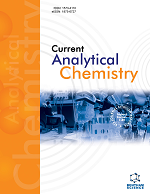
Full text loading...
This study aimed to carry out the green synthesis of palladium nanoparticles (Pd NPs) using the aqueous leaves extract of Eclipta alba. The appearance of a characteristic surface plasmon resonance peak at 410 nm confirmed the synthesis of Pd NPs.
The average particle sizes of 13 nm were observed by using the leaf concentrations of 10 mL with a certain amount of PdCl2 (0.001 M) at 25°C. The Pd NPs, as synthesized under the optimized conditions (10 mL extract + 60°C + 0.001 M PdCl2), were spherical in shape, small in size, and uniformly distributed, as depicted by HR-TEM images.
FTIR, XRD, DLS, and zeta potential further confirmed the formation of Pd NPs. The Pd NPs synthesized at optimized conditions exhibited strong catalytic activity in dye Eosin yellow, Rose Bengal, Tartrazine, and Ponceau S degradation by discoloration of dyes in 3 hrs. The removal of all dyes by the Pd NPs was optimized by varying specific operating parameters, such as initial dye concentration, solution pH, irradiation time, and temperature.
This high activity of Pd NPs may be due to their small size, high dispersion, and surface-capping phytochemicals.

Article metrics loading...

Full text loading...
References


Data & Media loading...
Supplements

